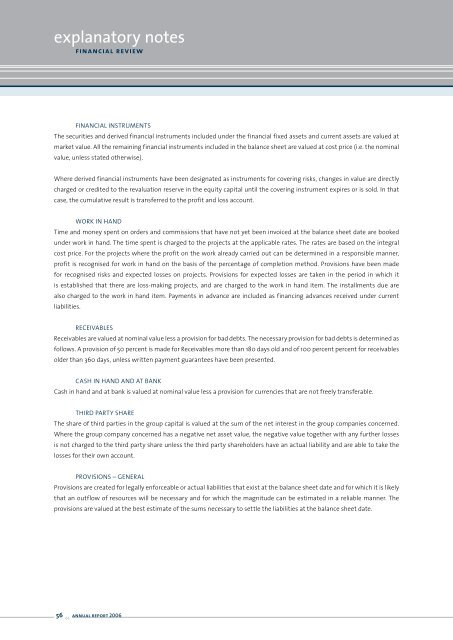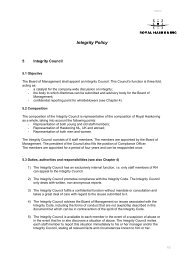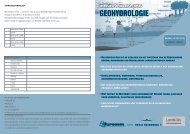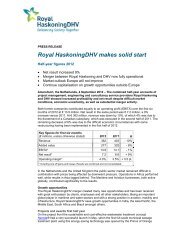annual report - Royal Haskoning
annual report - Royal Haskoning
annual report - Royal Haskoning
You also want an ePaper? Increase the reach of your titles
YUMPU automatically turns print PDFs into web optimized ePapers that Google loves.
explanatory notes<br />
financial review<br />
Financial instruments<br />
The securities and derived financial instruments included under the financial fixed assets and current assets are valued at<br />
market value. All the remaining financial instruments included in the balance sheet are valued at cost price (i.e. the nominal<br />
value, unless stated otherwise).<br />
Where derived financial instruments have been designated as instruments for covering risks, changes in value are directly<br />
charged or credited to the revaluation reserve in the equity capital until the covering instrument expires or is sold. In that<br />
case, the cumulative result is transferred to the profit and loss account.<br />
Work in hand<br />
Time and money spent on orders and commissions that have not yet been invoiced at the balance sheet date are booked<br />
under work in hand. The time spent is charged to the projects at the applicable rates. The rates are based on the integral<br />
cost price. For the projects where the profit on the work already carried out can be determined in a responsible manner,<br />
profit is recognised for work in hand on the basis of the percentage of completion method. Provisions have been made<br />
for recognised risks and expected losses on projects. Provisions for expected losses are taken in the period in which it<br />
is established that there are loss-making projects, and are charged to the work in hand item. The installments due are<br />
also charged to the work in hand item. Payments in advance are included as financing advances received under current<br />
liabilities.<br />
Receivables<br />
Receivables are valued at nominal value less a provision for bad debts. The necessary provision for bad debts is determined as<br />
follows. A provision of 50 percent is made for Receivables more than 180 days old and of 100 percent percent for receivables<br />
older than 360 days, unless written payment guarantees have been presented.<br />
Cash in hand and at bank<br />
Cash in hand and at bank is valued at nominal value less a provision for currencies that are not freely transferable.<br />
Third party share<br />
The share of third parties in the group capital is valued at the sum of the net interest in the group companies concerned.<br />
Where the group company concerned has a negative net asset value, the negative value together with any further losses<br />
is not charged to the third party share unless the third party shareholders have an actual liability and are able to take the<br />
losses for their own account.<br />
Provisions – general<br />
Provisions are created for legally enforceable or actual liabilities that exist at the balance sheet date and for which it is likely<br />
that an outflow of resources will be necessary and for which the magnitude can be estimated in a reliable manner. The<br />
provisions are valued at the best estimate of the sums necessary to settle the liabilities at the balance sheet date.<br />
56

















